Abstract
OBJECTIVE: To analyze a comprehensive multivariate model of the use of mental health-related ambulatory care services by children ages 6-17. STUDY SETTING: The 1987 National Medical Expenditure Survey, a national probability sample of the U.S. civilian noninstitutionalized population. STUDY DESIGN: A cross-sectional survey of a national probability sample of the U.S. population. Key independent variables include person-level mental health status, health care coverage, family income, and use of mental health services by other family members. DATA COLLECTION: Four in-person interviews were conducted during 1987 using structured questionnaires. A designated family respondent was used to answer questions for other family members, including children. PRINCIPAL FINDINGS: Children with poor mental health in high-income families were more than three times as likely to have a mental health-related visit than children with poor mental health in low-income families. The number of mental health-related visits and the likelihood of seeing a mental health specialist also increased along with family income. Mental health use by other family members was strongly associated with use. CONCLUSIONS: The results from this study provide strong evidence that the socioeconomic status of children is an important factor in explaining unmet need for mental health services.
Full text
PDF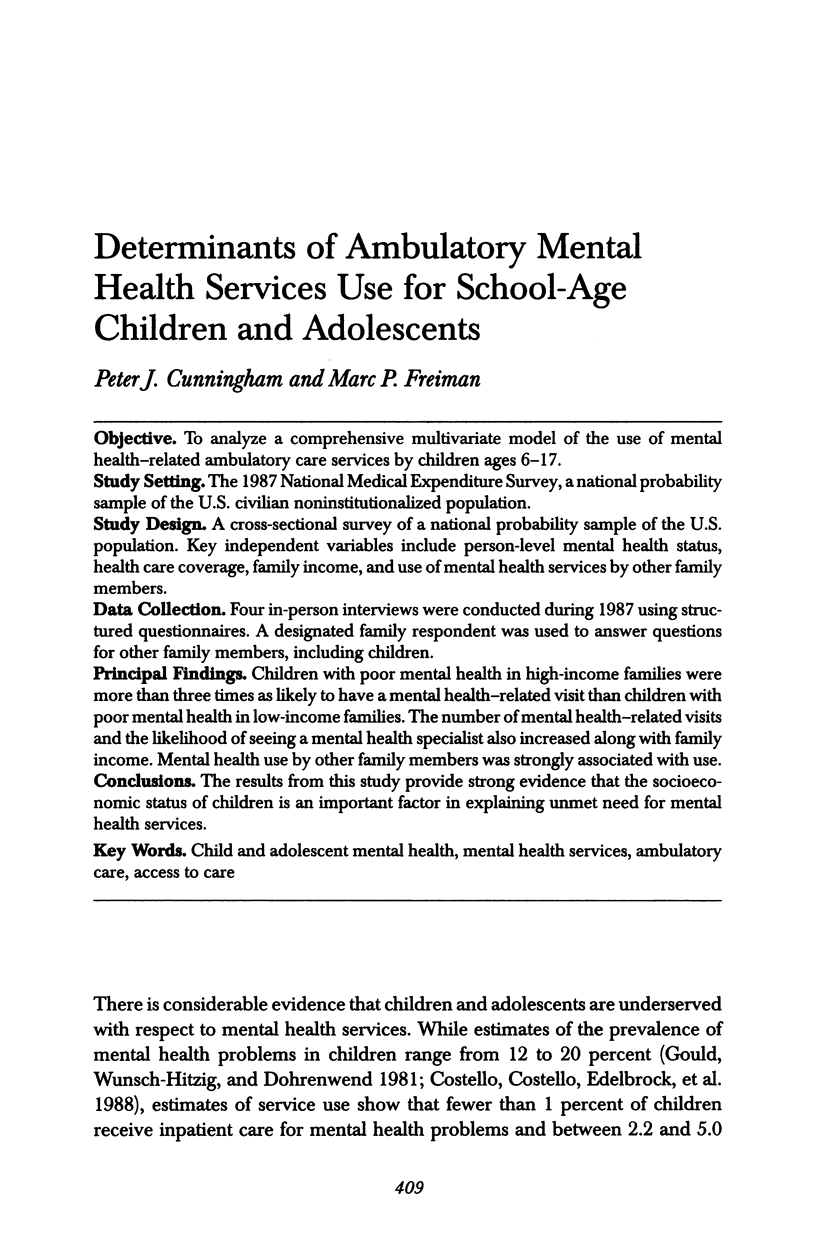
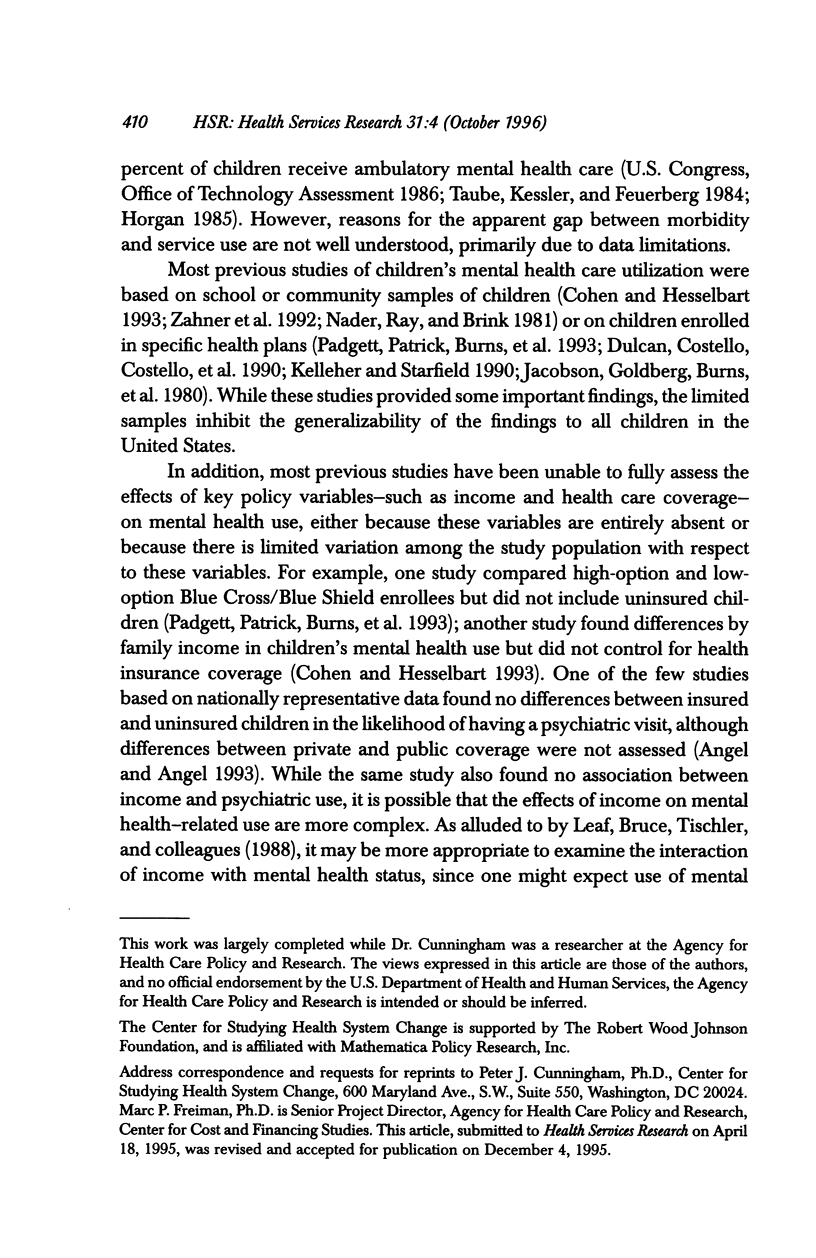
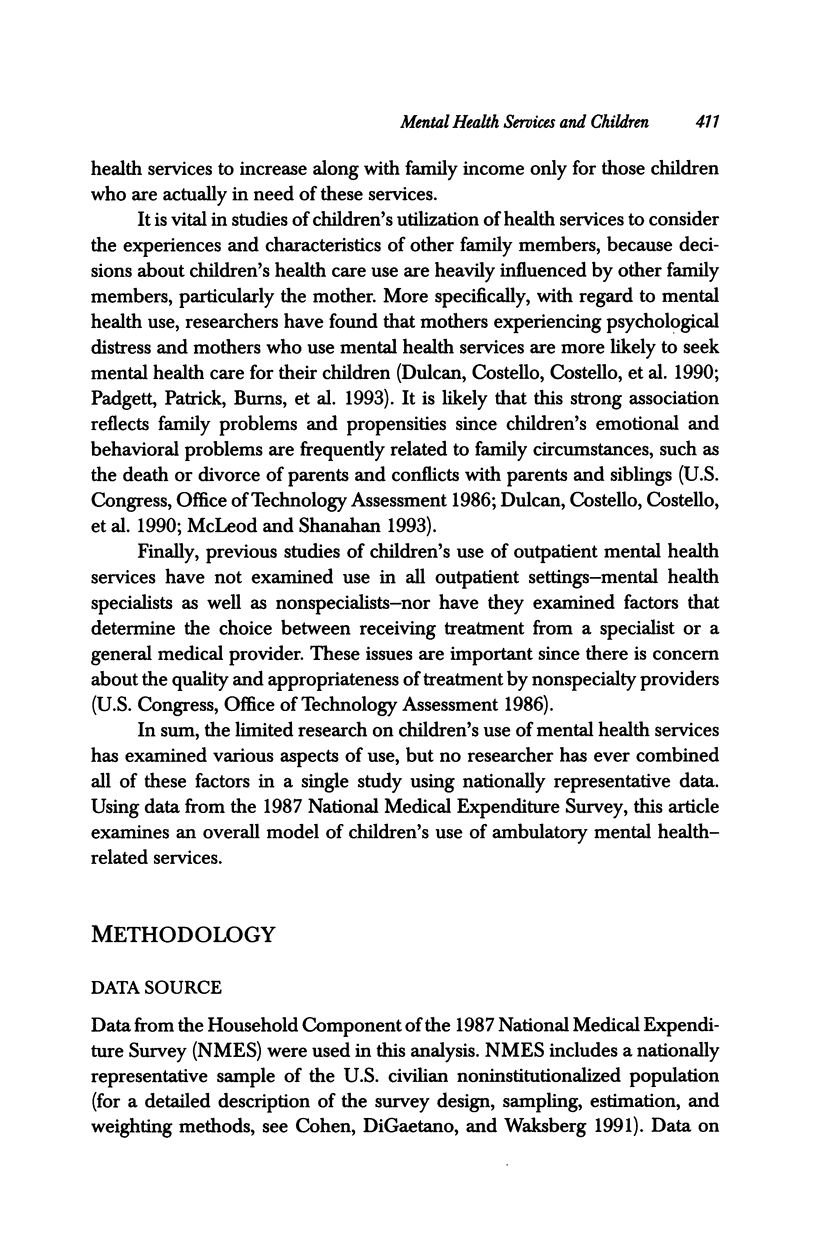
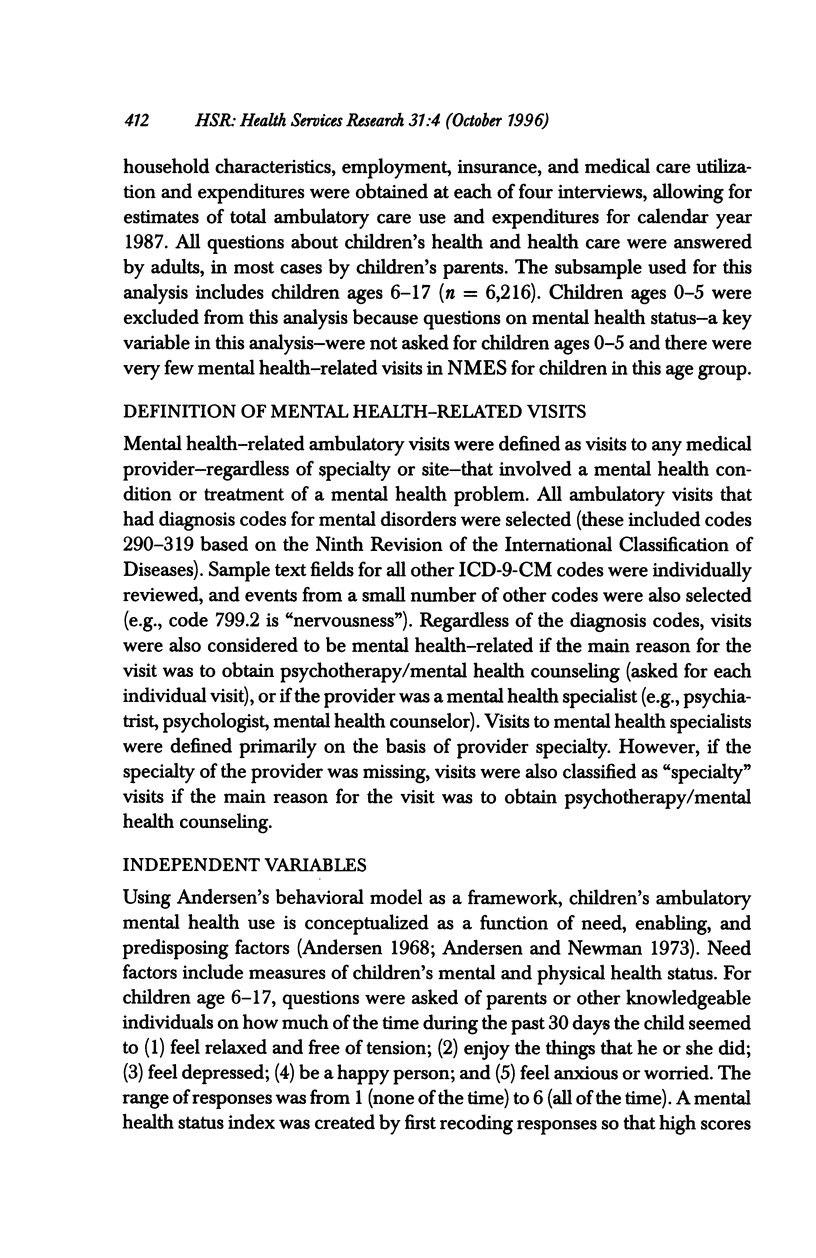
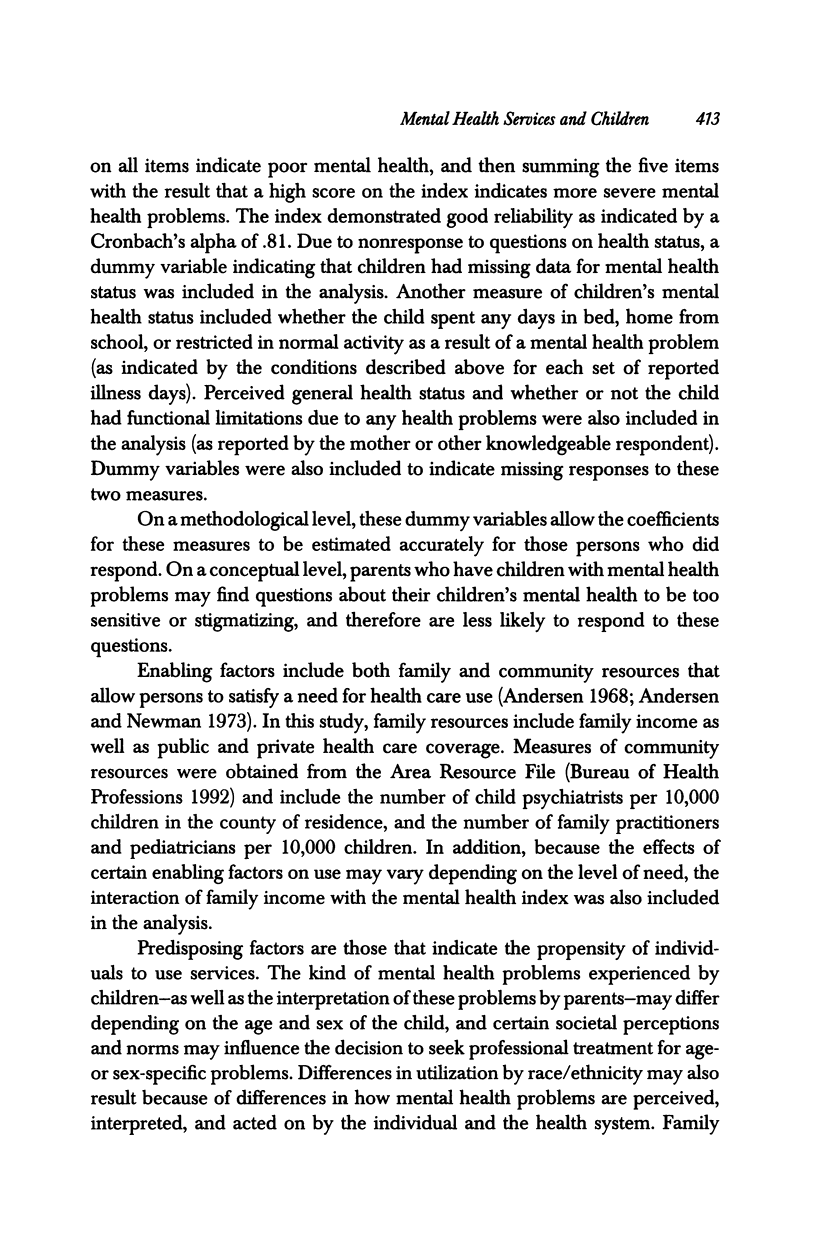
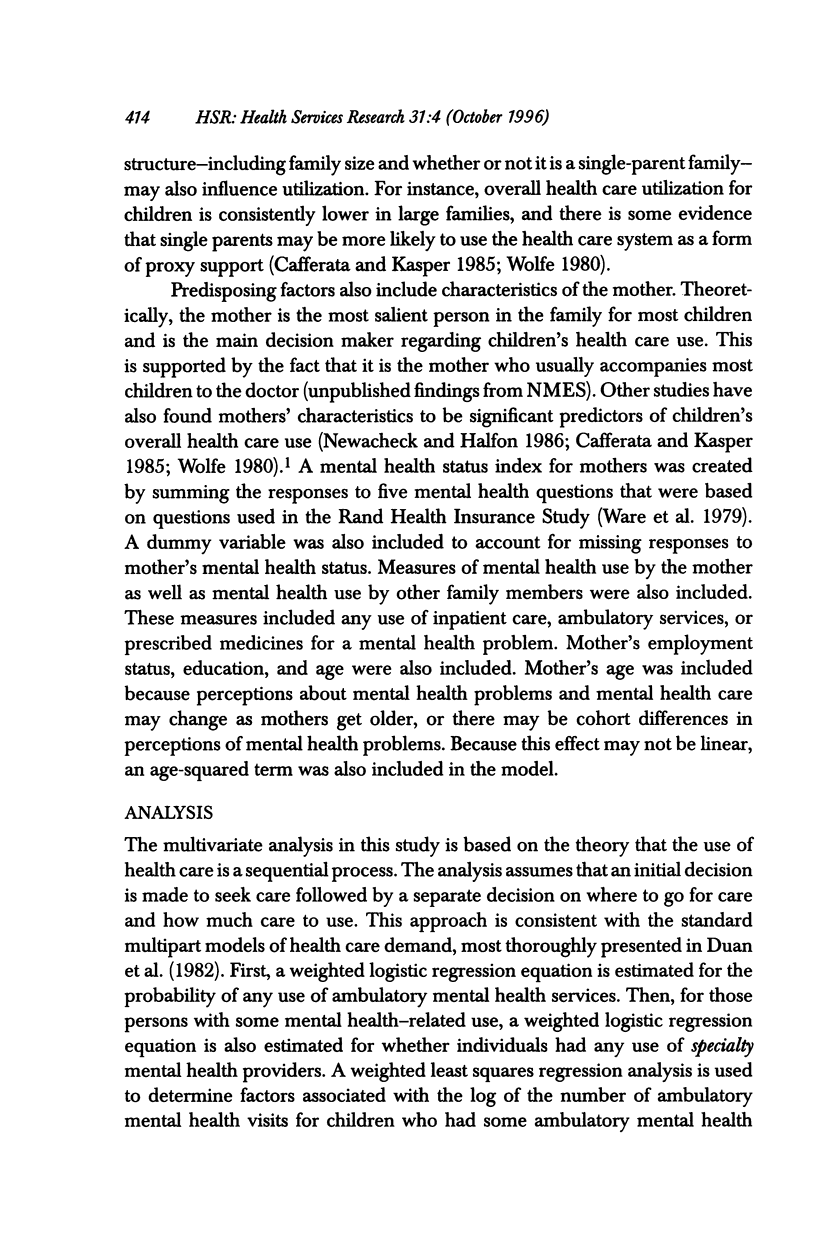
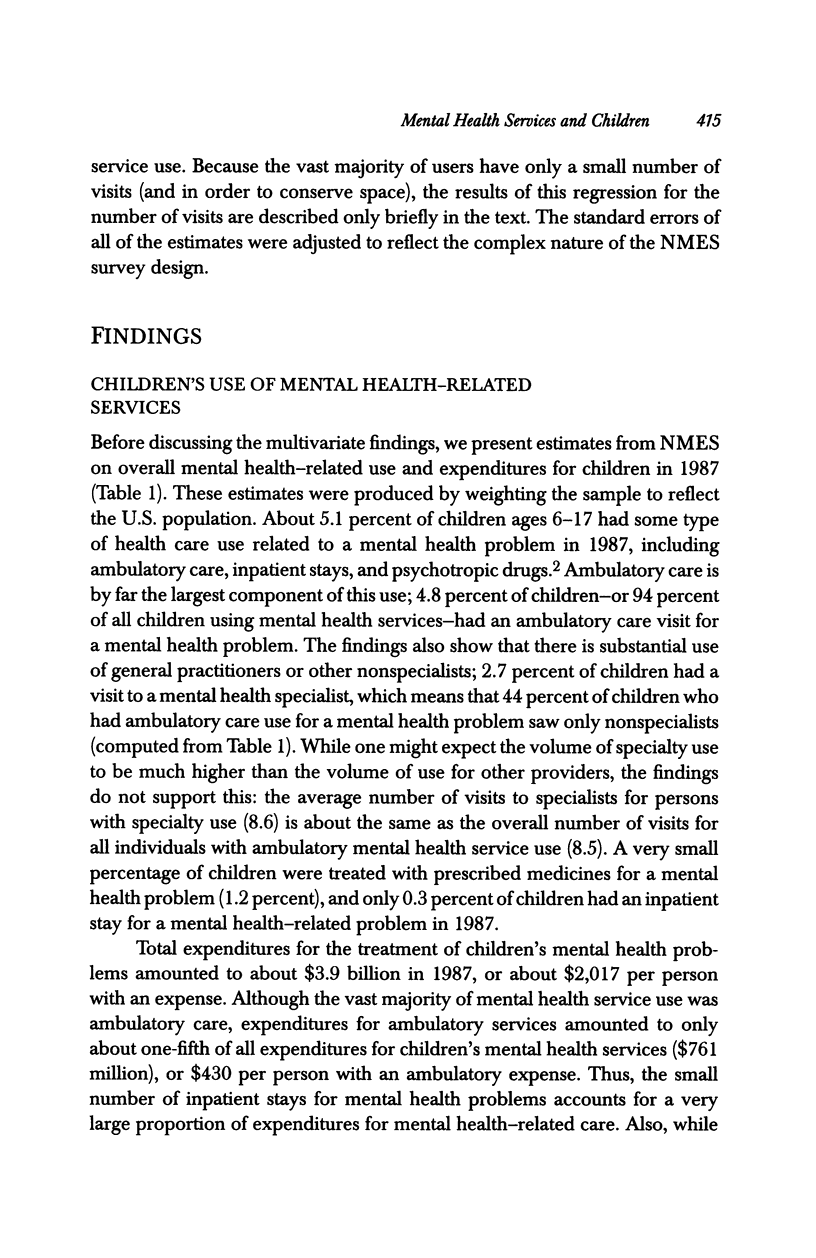

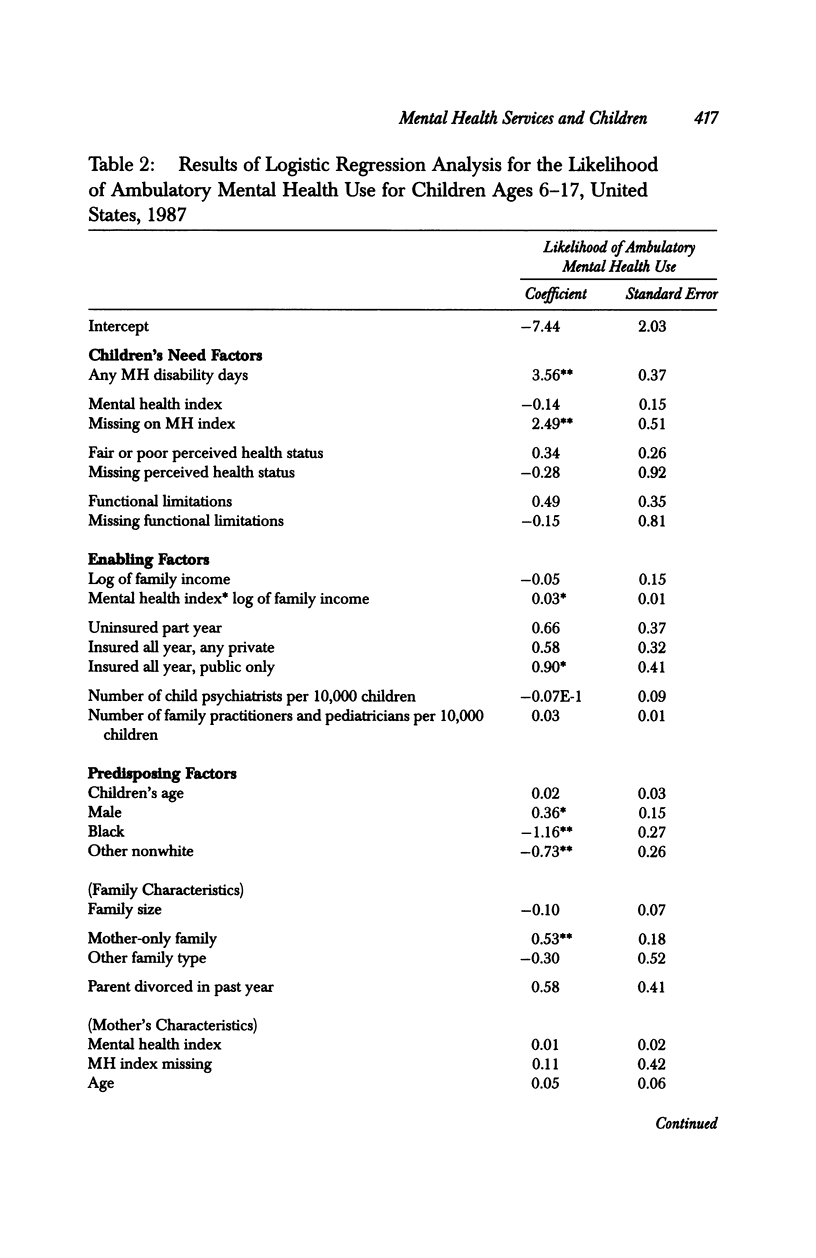
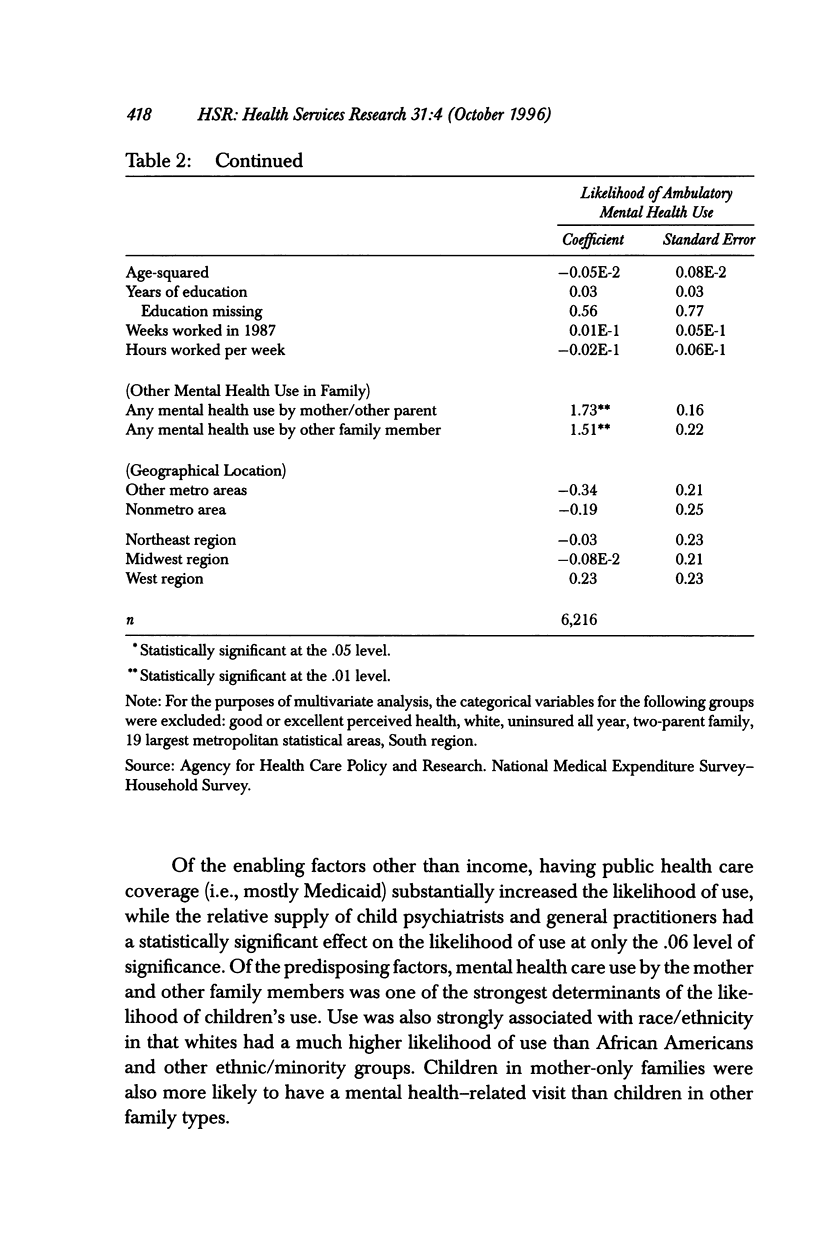
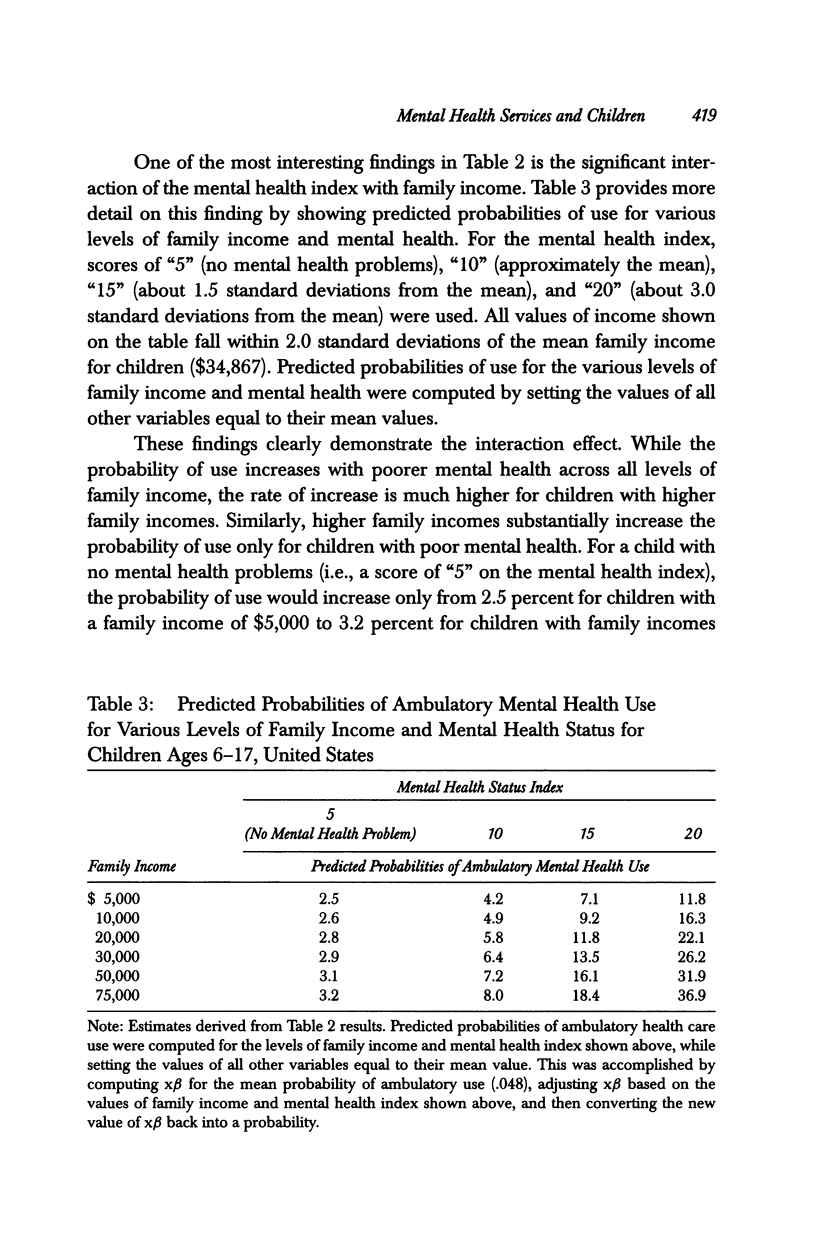
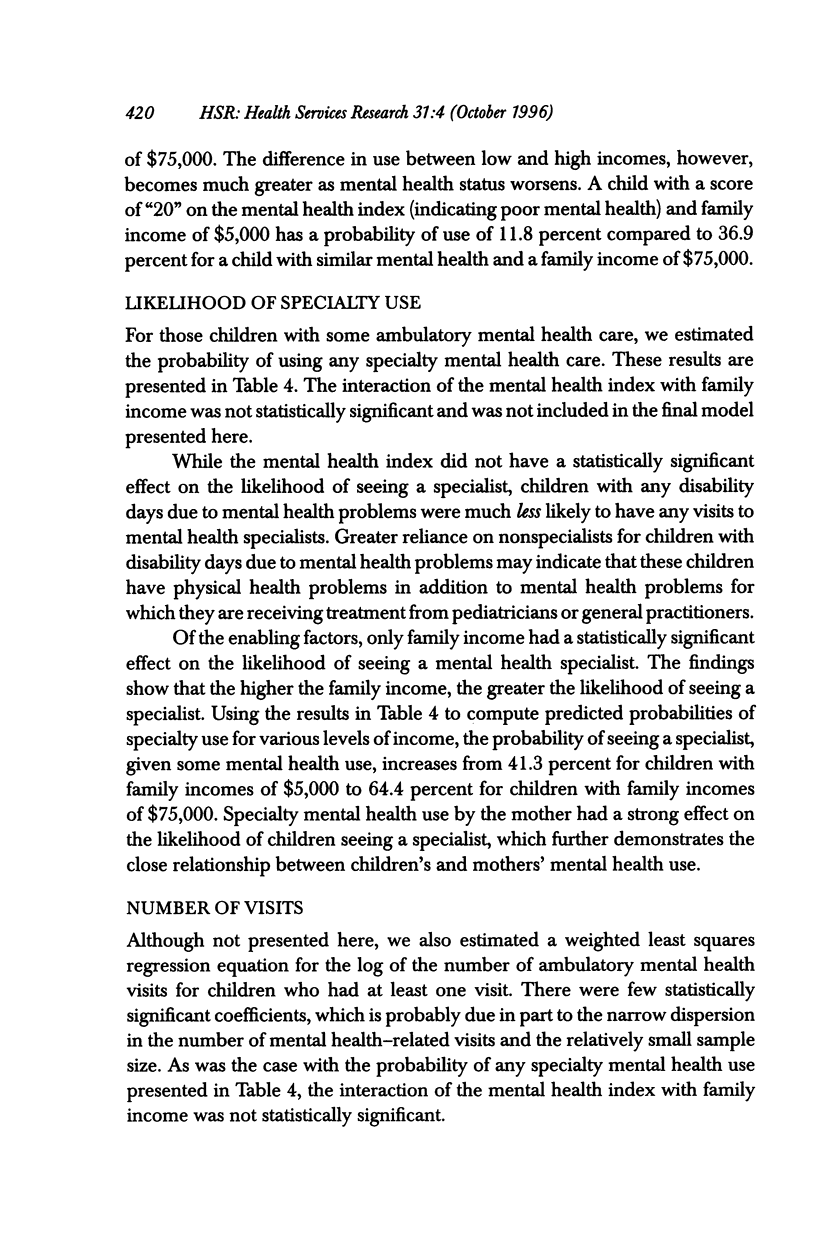
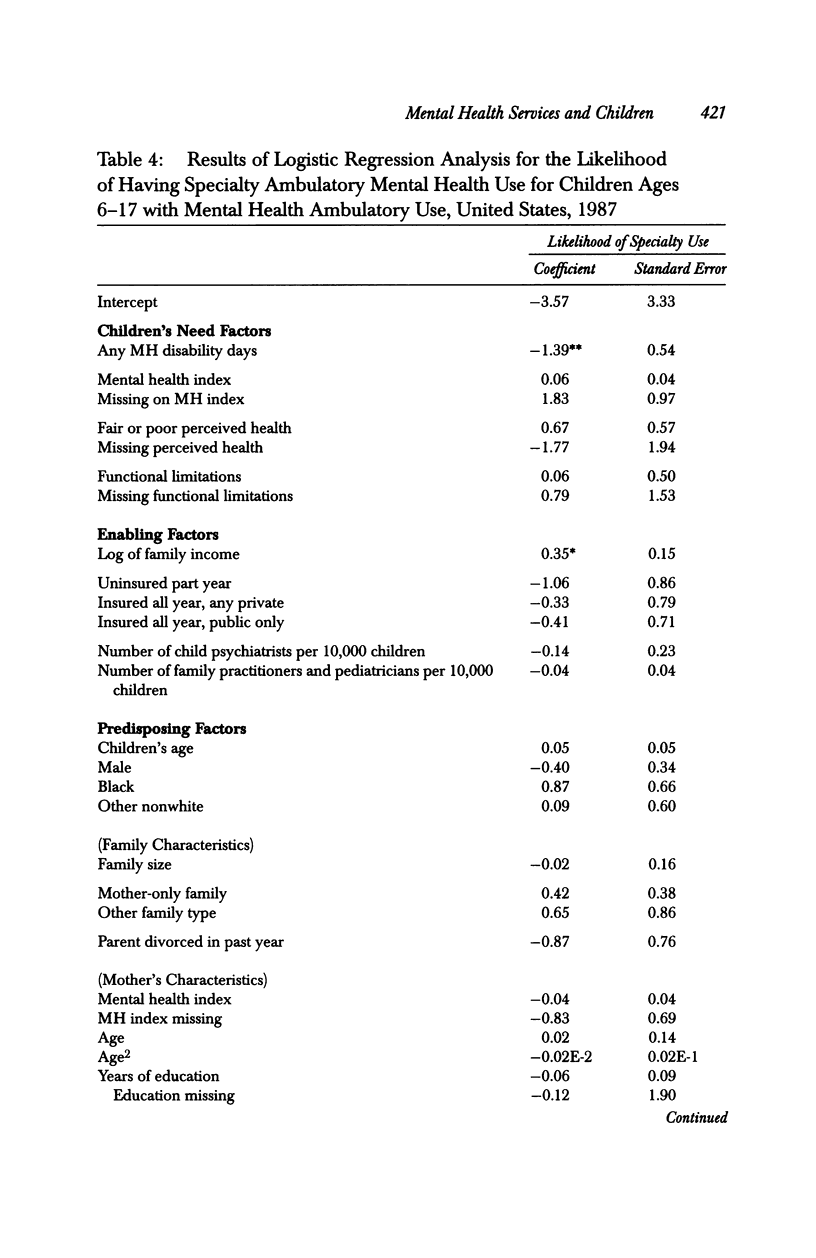
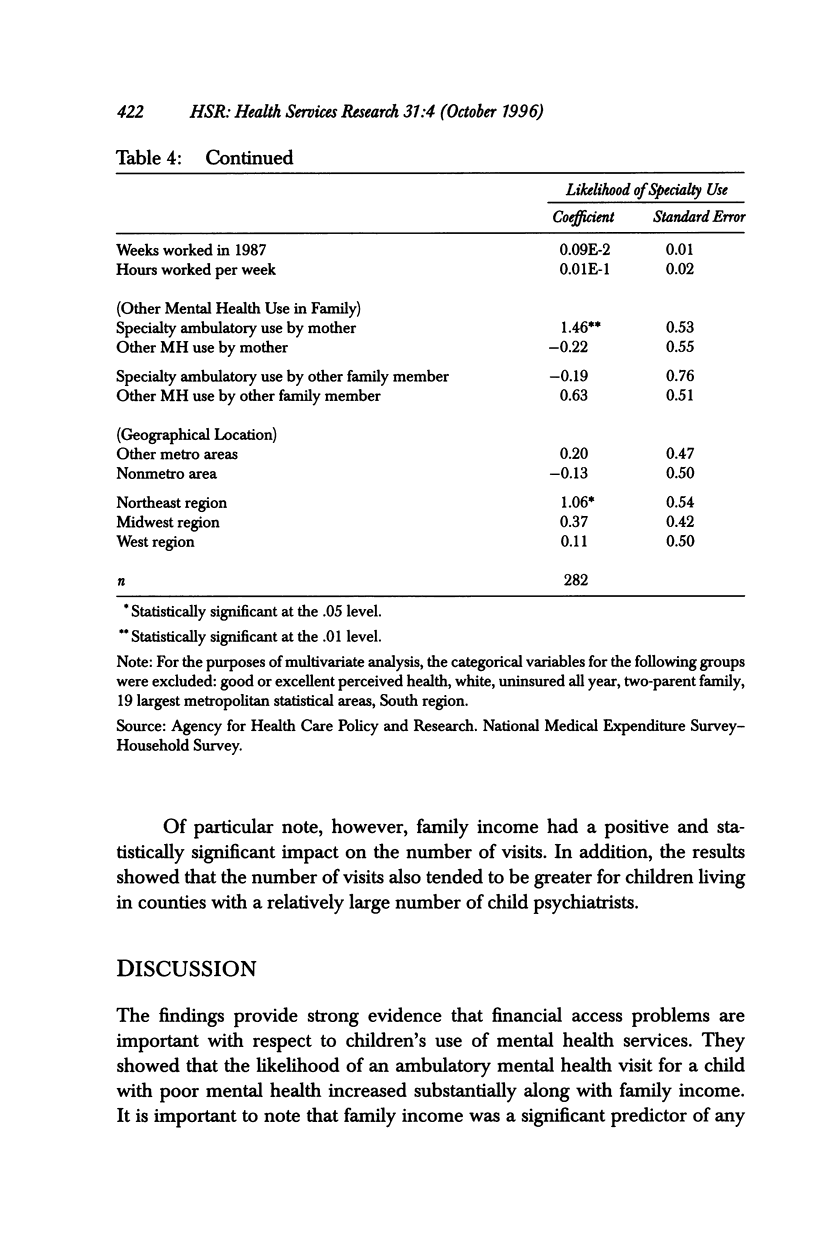

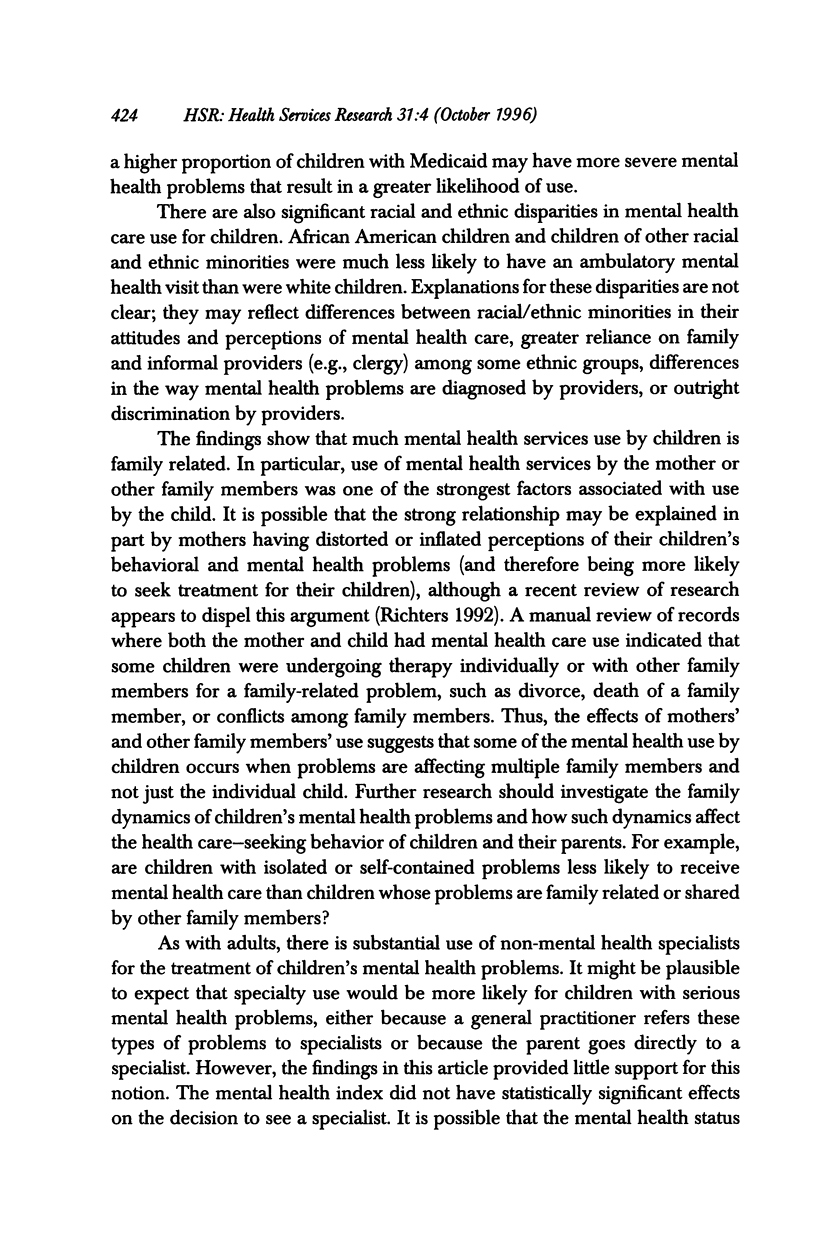
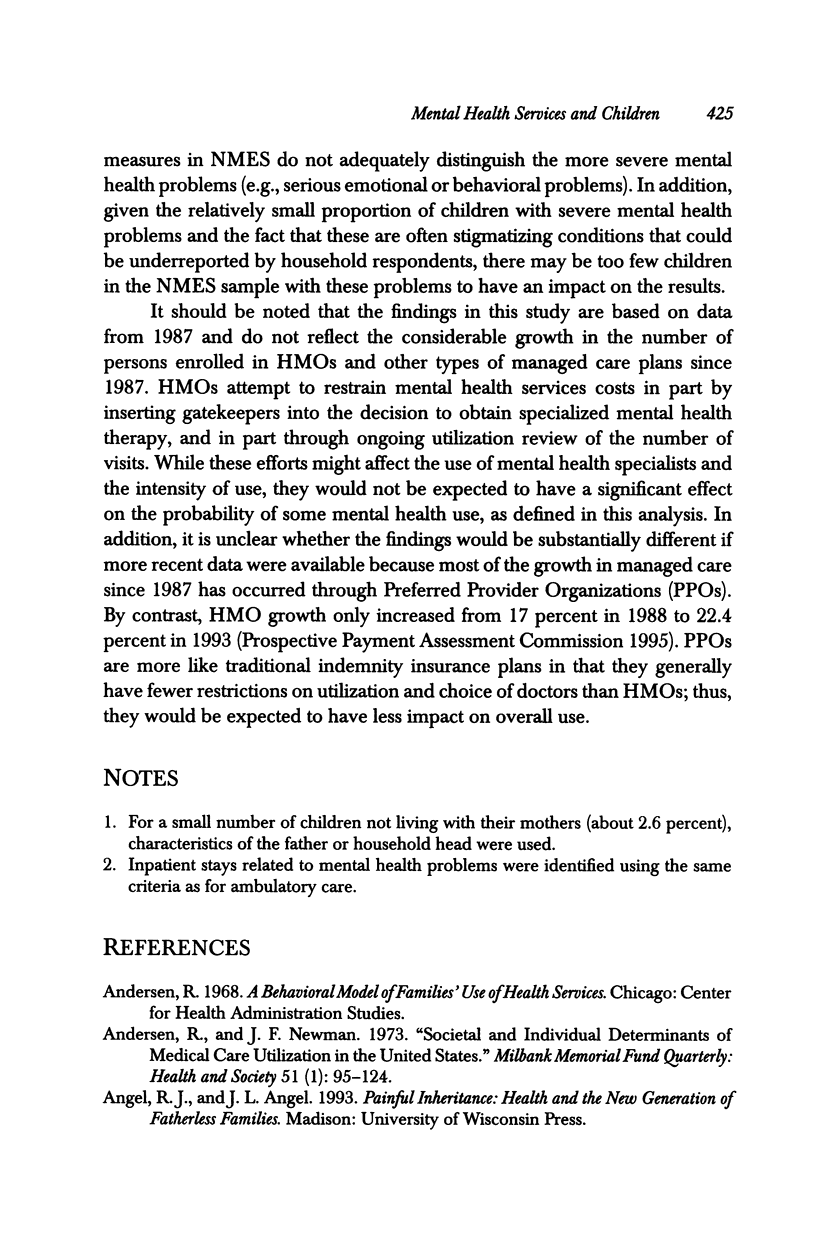
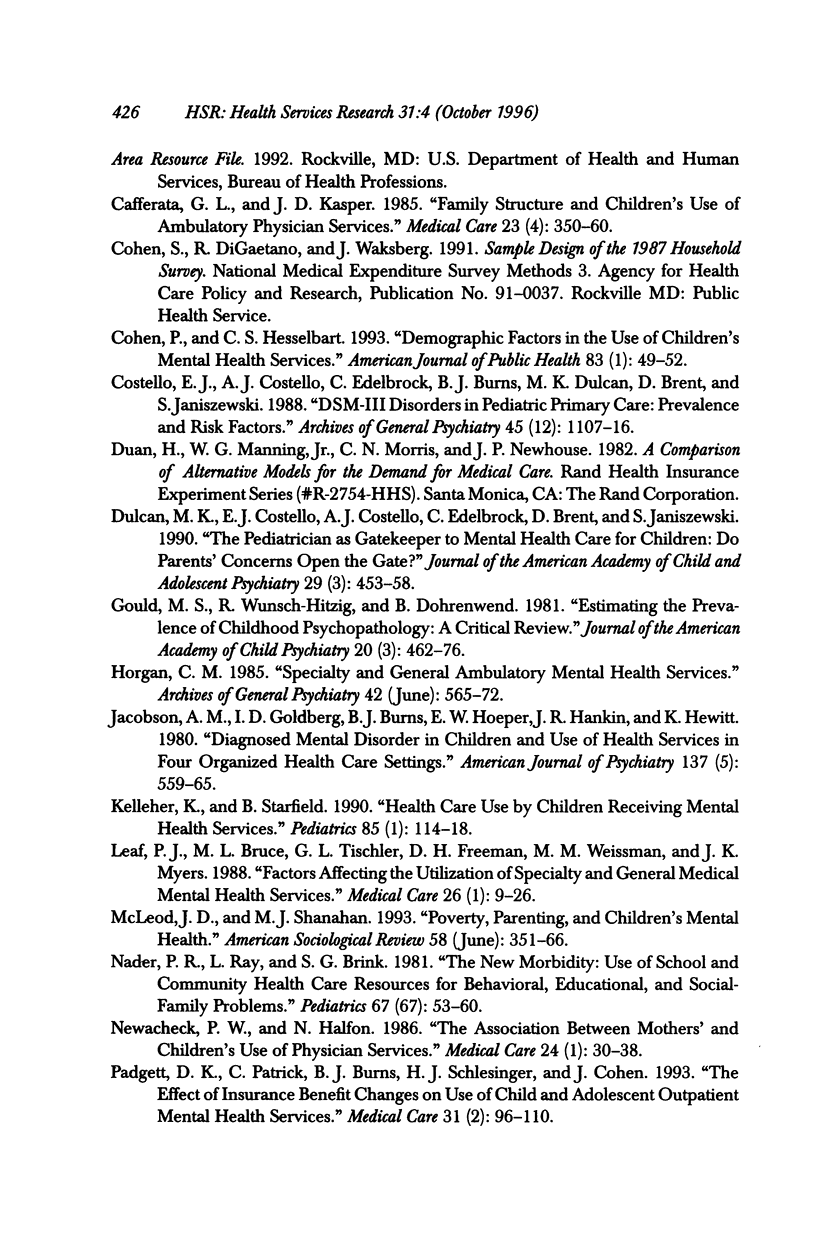
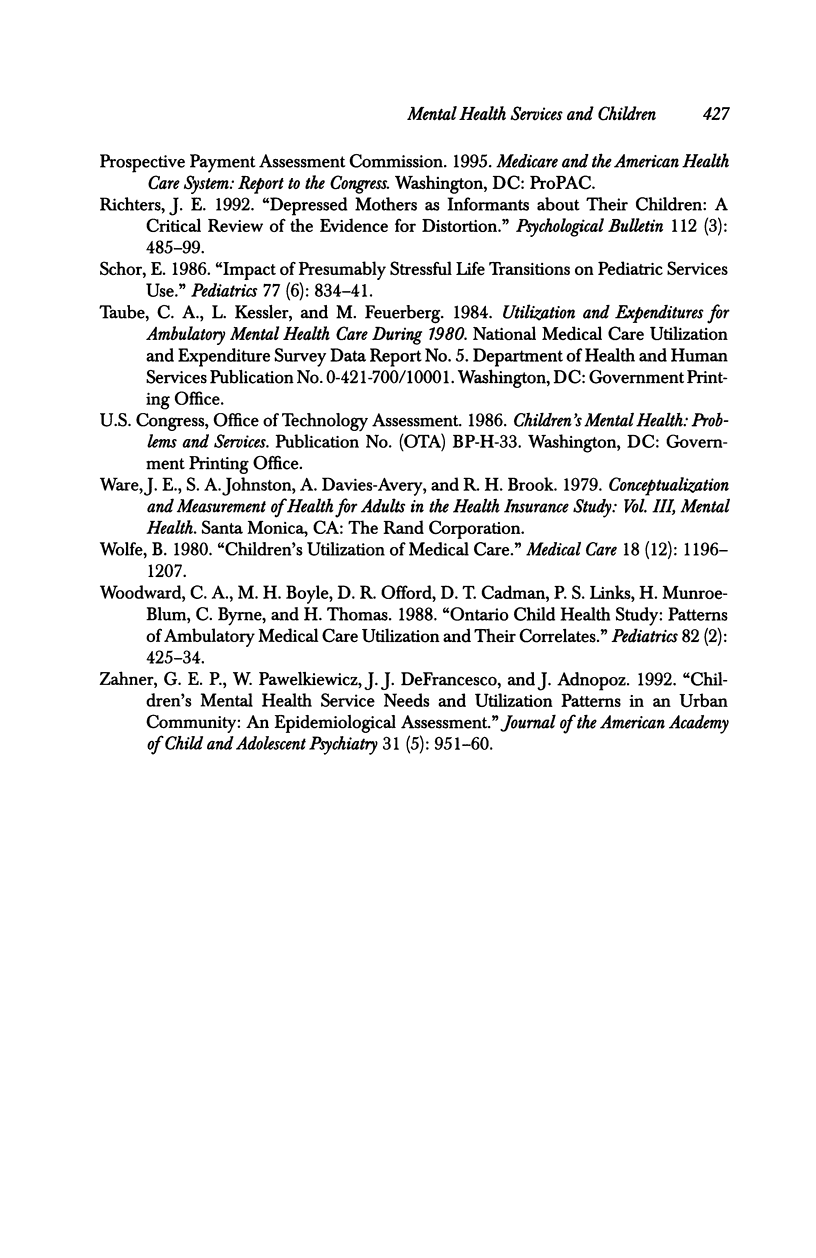
Selected References
These references are in PubMed. This may not be the complete list of references from this article.
- Andersen R., Newman J. F. Societal and individual determinants of medical care utilization in the United States. Milbank Mem Fund Q Health Soc. 1973 Winter;51(1):95–124. [PubMed] [Google Scholar]
- Cafferata G. L., Kasper J. D. Family structure and children's use of ambulatory physician services. Med Care. 1985 Apr;23(4):350–360. doi: 10.1097/00005650-198504000-00007. [DOI] [PubMed] [Google Scholar]
- Cohen P., Hesselbart C. S. Demographic factors in the use of children's mental health services. Am J Public Health. 1993 Jan;83(1):49–52. doi: 10.2105/ajph.83.1.49. [DOI] [PMC free article] [PubMed] [Google Scholar]
- Costello E. J., Costello A. J., Edelbrock C., Burns B. J., Dulcan M. K., Brent D., Janiszewski S. Psychiatric disorders in pediatric primary care. Prevalence and risk factors. Arch Gen Psychiatry. 1988 Dec;45(12):1107–1116. doi: 10.1001/archpsyc.1988.01800360055008. [DOI] [PubMed] [Google Scholar]
- Dulcan M. K., Costello E. J., Costello A. J., Edelbrock C., Brent D., Janiszewski S. The pediatrician as gatekeeper to mental health care for children: do parents' concerns open the gate? J Am Acad Child Adolesc Psychiatry. 1990 May;29(3):453–458. doi: 10.1097/00004583-199005000-00018. [DOI] [PubMed] [Google Scholar]
- Gould M. S., Wunsch-Hitzig R., Dohrenwend B. Estimating the prevalence of childhood psychopathology. A critical review. J Am Acad Child Psychiatry. 1981 Summer;20(3):462–476. doi: 10.1016/s0002-7138(09)61640-x. [DOI] [PubMed] [Google Scholar]
- Horgan C. M. Specialty and general ambulatory mental health services. Comparison of utilization and expenditures. Arch Gen Psychiatry. 1985 Jun;42(6):565–572. doi: 10.1001/archpsyc.1985.01790290047005. [DOI] [PubMed] [Google Scholar]
- Jacobson A. M., Goldberg I. D., Burns B. J., Hoeper E. W., Hankin J. R., Hewitt K. Diagnosed mental disorder in children and use of health services in four organized health care settings. Am J Psychiatry. 1980 May;137(5):559–565. doi: 10.1176/ajp.137.5.559. [DOI] [PubMed] [Google Scholar]
- Kelleher K., Starfield B. Health care use by children receiving mental health services. Pediatrics. 1990 Jan;85(1):114–118. [PubMed] [Google Scholar]
- Leaf P. J., Bruce M. L., Tischler G. L., Freeman D. H., Jr, Weissman M. M., Myers J. K. Factors affecting the utilization of specialty and general medical mental health services. Med Care. 1988 Jan;26(1):9–26. doi: 10.1097/00005650-198801000-00002. [DOI] [PubMed] [Google Scholar]
- Nader P. R., Ray L., Brink S. The new morbidity: use of school and community health care resources for behavioral, educational, and social-family problems. Pediatrics. 1981 Jan;67(1):53–60. [PubMed] [Google Scholar]
- Newacheck P. W., Halfon N. The association between mother's and children's use of physician services. Med Care. 1986 Jan;24(1):30–38. doi: 10.1097/00005650-198601000-00004. [DOI] [PubMed] [Google Scholar]
- Richters J. E. Depressed mothers as informants about their children: a critical review of the evidence for distortion. Psychol Bull. 1992 Nov;112(3):485–499. doi: 10.1037/0033-2909.112.3.485. [DOI] [PubMed] [Google Scholar]
- Schor E. L. Use of health care services by children and diagnoses received during presumably stressful life transitions. Pediatrics. 1986 Jun;77(6):834–841. [PubMed] [Google Scholar]
- Wolfe B. L. Children's utilization of medical care. Med Care. 1980 Dec;18(12):1196–1207. doi: 10.1097/00005650-198012000-00005. [DOI] [PubMed] [Google Scholar]
- Woodward C. A., Boyle M. H., Offord D. R., Cadman D. T., Links P. S., Munroe-Blum H., Byrne C., Thomas H. Ontario Child Health Study: patterns of ambulatory medical care utilization and their correlates. Pediatrics. 1988 Sep;82(3 Pt 2):425–434. [PubMed] [Google Scholar]


